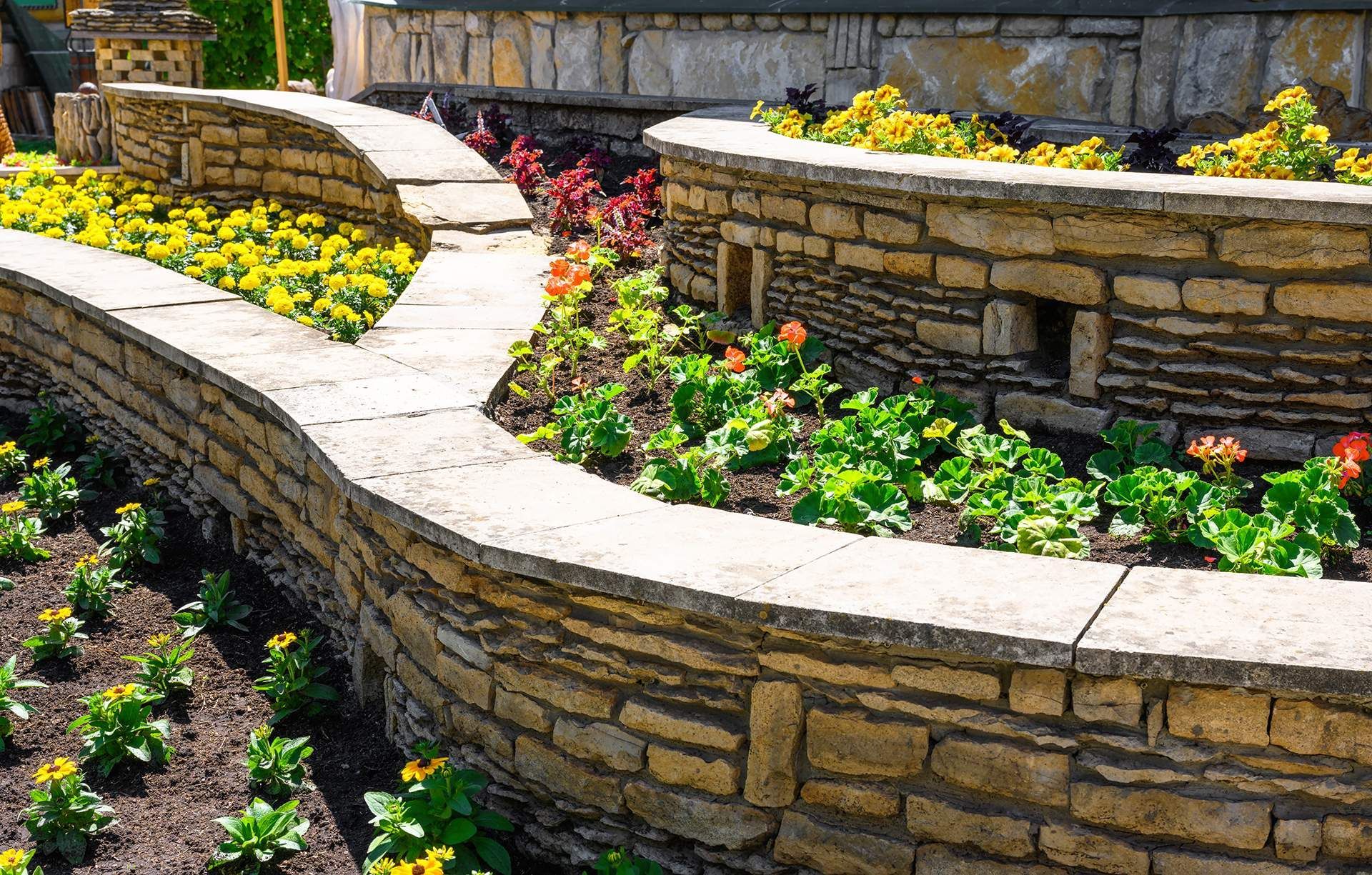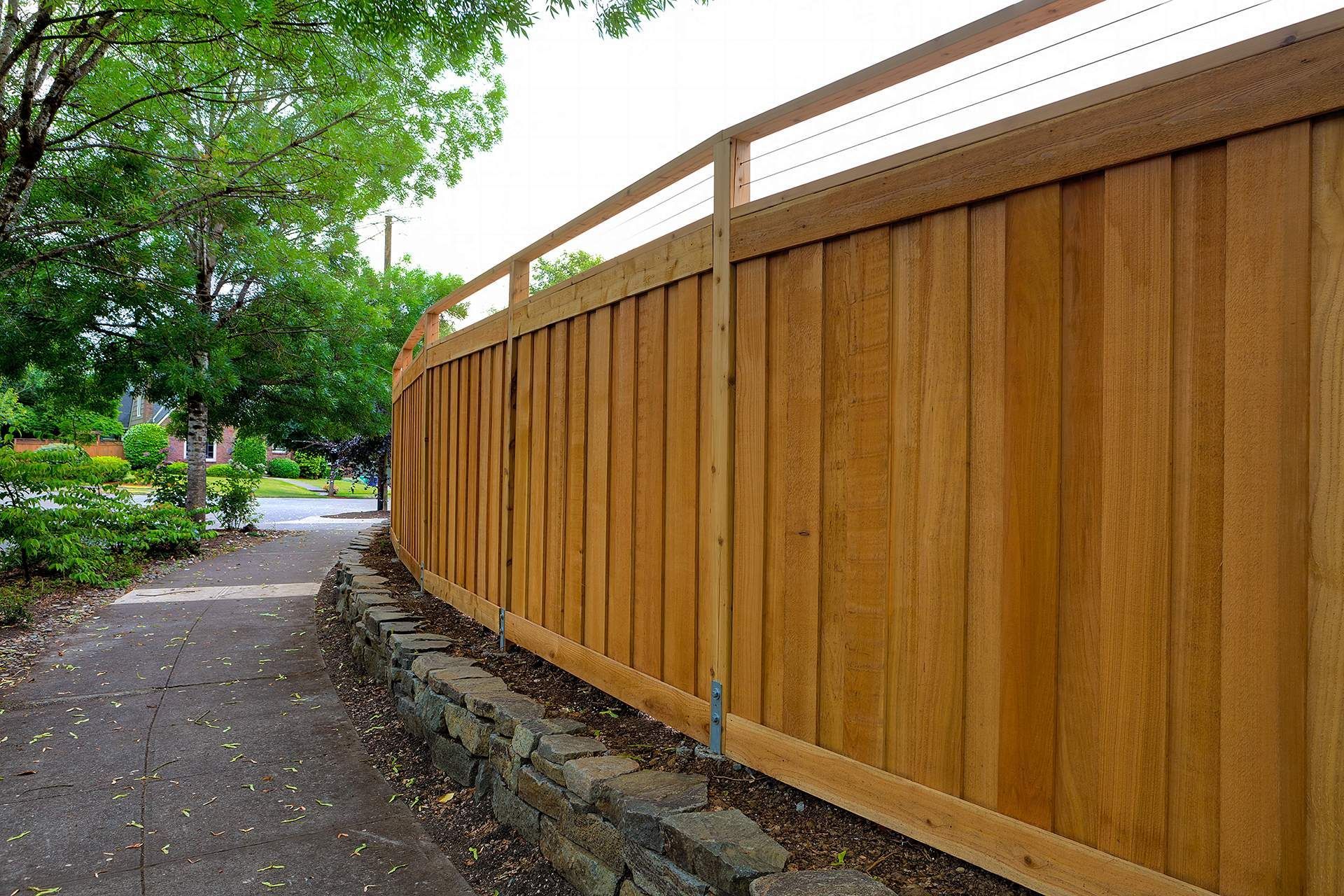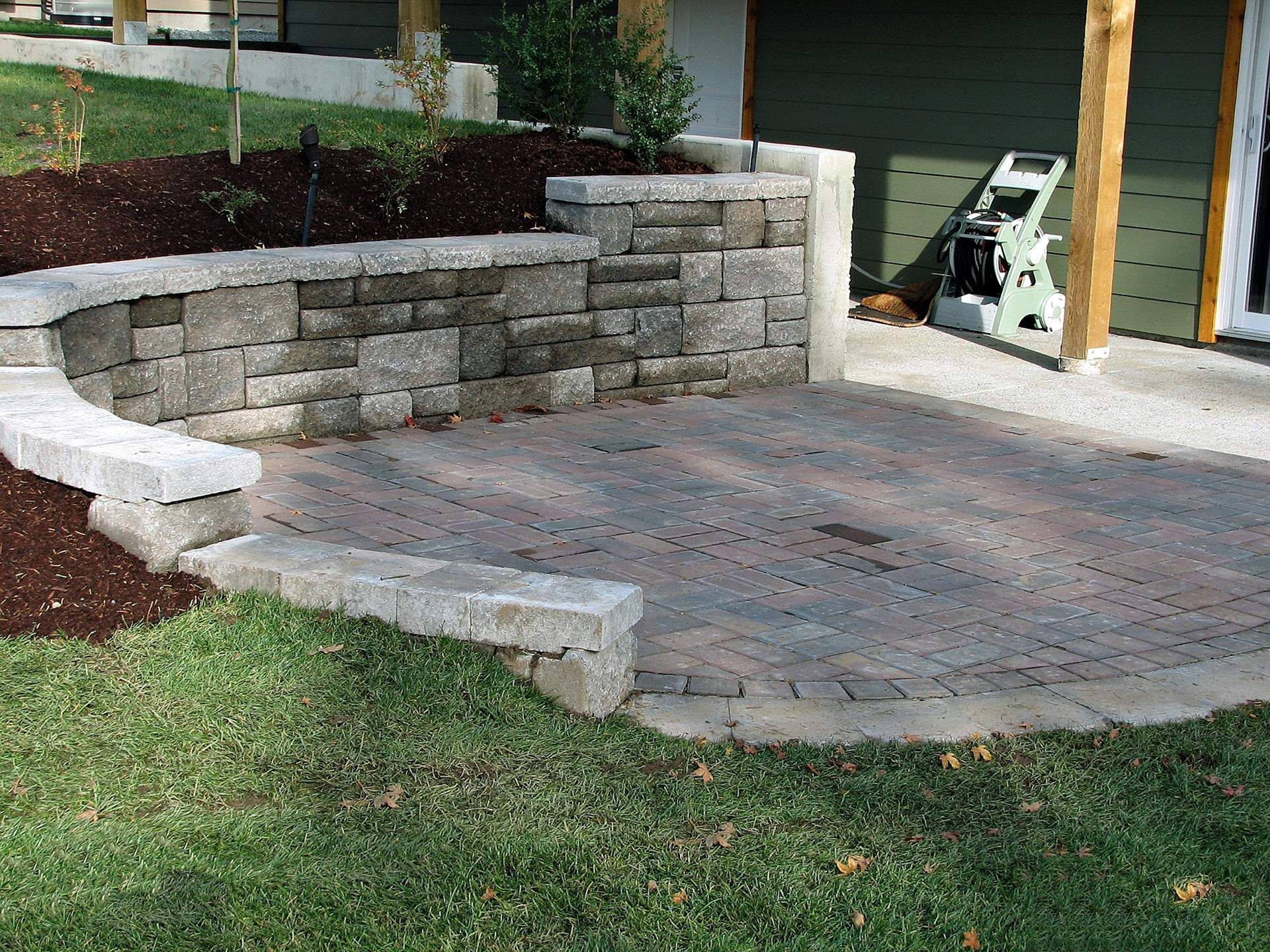Retaining Walls in Louisville KY
Local Retaining Wall Installers in Louisville, KY
D R Excavation is your go-to expert for top-notch retaining wall services, specializing in creating resilient structures that blend functionality with aesthetics.
With a mastery of excavation techniques, they meticulously design and construct retaining walls that stand strong against the test of time.
D R Excavation employs quality materials and a skilled team to ensure durability and structural integrity.
Whether for landscaping or erosion control, their tailored solutions cater to diverse needs, providing a solid foundation for your outdoor spaces.
Choose D R Excavation for reliable, efficient, and aesthetically pleasing retaining wall services that transform landscapes with lasting impact.
D R Excavation Louisville
1340 Thornberry Ave, Louisville, KY 40215
(502) 369-0375
Retaining Walls in Louisville, KY
At D R Excavation, we're a team of outdoor enthusiasts who are passionate about our work as excavation contractors in Louisville, KY.
We specialize in retaining wall work, and we're dedicated to providing our clients with the best possible results.
We believe that the key to a successful project is in the details, and we take pride in our attention to detail and our commitment to quality.
We're proud of the reputation we've built as one of the leading excavation contractors in the Louisville area, and we're always looking for ways to improve our services.
What We Offer
At D R Excavation in Louisville, KY, our retaining wall service revolves around four main points of focus: the size of the retaining wall, the materials used to build the retaining wall, the location of the retaining wall and the design elements that will complement the nearby landscape. We believe that by taking these four factors into account, we can create a retaining wall that is both attractive and functional.
-
Size
The size of the wall is an important focus of our retaining wall installation process because it affects both the stability of the wall and the amount of soil that can be retained.
A taller wall will be more stable, but it will also require more soil to fill in behind it. Therefore, we take into account the size of the wall when we are determining the appropriate installation process.
We also take into account the type of soil and the slope of the land. The type of soil will determine how much water it can hold and how well it will drain.
The slope of the land will determine how much force is required to hold the soil in place.
-
Materials
The composition of your retaining wall is a critical factor in its stability and strength.
We carefully select the materials we use in our retaining wall installations.
We only use high-quality materials that have been tested to withstand the elements and the weight of the soil they are retaining.
Our team has extensive experience in installing all types of retaining walls, and we will work with you to select the best materials for your particular project.
-
Location
The location of the wall is one of the most important aspects of the retaining wall installation process.
The wall must be placed in the correct location in order to provide the desired results.
In order to ensure that the wall is installed correctly, it is important to select a location that is level and free of obstructions.
Additionally, the wall should be placed at least two feet away from any structures or landscaping features.
By following these guidelines, we can help to ensure that your retaining wall will provide years of trouble-free service.
-
Design Elements
The retaining wall must be designed to withstand the loads imposed by the soil and water behind it.
In addition, the wall must be tall enough to provide adequate support for the soil and water, and must be properly anchored to the ground to prevent movement.
The design of the wall must also take into account the surrounding environment, such as trees, shrubs, and other structures.
Finally, the wall must be aesthetically pleasing and complement the landscape.
Types of Retaining Walls
In Louisville, KY, we build a variety of different types of retaining walls, each designed to meet the specific needs of our clients. For example, we often use interlocking blocks to create strong, durable walls that can withstand the force of water and soil. We also use bricks and stones to create standing walls that are both attractive and long-lasting. No matter what type of wall you need, we have the experience and expertise to get the job done right.
-
Gravity Walls
Gravity retaining walls are built using materials such as stone, concrete, or brick, and they rely on their weight to hold back the force of the earth.
These walls are typically not reinforced with additional supports, so they must be carefully designed to ensure that they can withstand the pressure of the soil behind them.
Gravity retaining walls can be an effective way to manage stormwater runoff and prevent soil erosion, but they must be carefully designed and constructed to be effective.
-
Cantilevered Walls
There are many different types of retaining walls, but cantilevered retaining walls are a popular choice for many homeowners. Cantilevered retaining walls are built by attaching beams to the top of the wall and extending them out over the ground.
This type of wall is very strong and can support a lot of weight. Additionally, cantilevered retaining walls can be built to any height, making them a versatile option for any landscaping project.
If you are looking for a retaining wall that is both strong and stylish, a cantilevered retaining wall is a great choice.
-
Piling Walls
Piling retaining walls are one of the most common types of walls we build. They're also one of the most versatile, as they can be used in a variety of applications.
Piling walls are typically made from concrete, steel, or wood, and they're designed to resist the lateral pressure of the soil. The piles are driven into the ground until they reach a firm foundation, and then they're connected to each other with horizontal beams.
Piling walls are very strong, and they're often used in applications where other types of walls would fail.
-
Anchored Walls
Anchored retaining walls are a type of retaining wall that is built with cables or rods that are anchored into the ground or bedrock.
This type of retaining wall is often used when there is a need to support a large amount of weight or when the soil is not stable enough to support a traditional retaining wall.
Anchored retaining walls are usually made out of concrete, stone, or wood. They can be built to any height and can be customized to meet the needs of the project.
-
Decorative Walls
Most retaining walls are built to keep the soil from eroding, but some are purely decorative. Decorative retaining walls are usually made out of stone, brick, or concrete, and they can be either functional or purely aesthetic.
While most people think of retaining walls as large, solid structures, they can actually be quite small and delicate-looking. In addition to their beauty, decorative retaining walls can also help to stabilize slopes and prevent erosion.
As a result, they are a popular choice for both home and commercial landscapes.
-
Sitting Walls
Sitting walls are shorter than traditional walls and are built using smaller stones. They are designed to provide seating or to serve as a decorative backdrop, and they can be constructed using a variety of different methods.
One popular method is to set the stones in mortar, which gives the wall a more polished look. Another option is to build the wall using smaller, interlocking stones, which results in a more rustic appearance.
No matter what method you choose, building a sitting wall is a great way to add interest to your landscape.
-
Privacy Walls
One of the elements that we often incorporate into our designs is a privacy wall. Privacy walls can serve a variety of purposes, from blocking out unwanted noise to providing a sense of seclusion.
We use a variety of materials to build our privacy walls, including brick, stone, and wood. Each material has its own unique benefits and drawbacks, so we work with our clients to choose the best option for their needs.
In addition to materials, we also consider the height, thickness, and overall layout of the privacy wall. We believe that every detail matters when it comes to creating a flawless outdoor space.
Building Materials
In Louisville KY, we build retaining walls from a variety of different materials. The most common material is concrete, but we also use stone, brick, and wood. Each material has its own advantages and disadvantages, so we choose the material that is best suited for the job at hand. Ultimately, the decision of which material to use depends on the specific needs of the project.
-
Stone
When it comes to choosing materials for retaining walls, stone is often the preferred option for many customers.
While there are a variety of reasons why this may be the case, one of the most common is that stone is naturally strong and durable.
This means that it is less likely to crumble or collapse over time, which can often happen with weaker materials such as wood.
Stone retaining walls can add a touch of elegance and sophistication to any property, which may be important for some customers.
-
Poured Concrete
Poured concrete is a popular choice for retaining walls because it is strong and durable. It can also be stained or stamped to add some extra visual interest.
In addition, poured concrete can be customized to fit any space, and it is relatively easy to install. However, poured concrete does require some maintenance, and it can be susceptible to cracking if not properly cared for.
Nevertheless, many homeowners find that the benefits of poured concrete outweigh the drawbacks, making it an ideal material for their retaining wall needs.
-
Concrete Block
Some customers choose concrete blocks because they are less expensive than stone and last just as long.
Concrete blocks are also easier to work with because they are a uniform size and weight.
In addition, concrete blocks come in a variety of colors and can be textured to create a unique look.
Whatever material you choose for your retaining wall, we will work with you to create a beautiful and functional space.
-
Wood & Timber
When it comes to retaining walls, wood or timber is often the material of choice for many customers. There are a number of reasons why this is the case.
For one, wood is a highly versatile material that can be used in a variety of ways to create different looks.
Additionally, wood is also very strong and durable, meaning it can withstand the weight of the earth and any water that may seep through.
Finally, wood is also a relatively natural material, making it an eco-friendly choice for those who are looking to reduce their impact on the environment.
-
Boulder
Boulders are a popular choice for many customers because of their durability and natural aesthetic appeal.
In addition, boulders are typically very heavy, which helps to anchor the wall in place and prevent it from being moved by heavy rains or flooding.
However, one downside of using boulders is that they can be more expensive than other options such as concrete or wood.
Nonetheless, many customers feel that the benefits of using boulders outweigh the costs, making them an ideal choice for their retaining wall needs.
Retaining Wall Contractors
Our Louisville based retaining wall contractors have been in business for many years and have the experience to get the job done right.
We care about our customers and their needs. We will work with you to figure out what your project needs are and how we can help you.
We specialize in excavation, grading, and site work. We also do demolition, concrete work, and much more.
If you need an excavating contractor in Louisville KY, give us a call today.
Licensed & Insured
When you're looking for a retaining wall installation contractor, it is important to make sure that they are licensed and insured. This is a benefit to the customer because it protects them in case of any damages that may occur during the installation process.
If the contractor is not licensed and insured, the customer could be held liable for any damages that occur. In addition, a licensed and insured contractor is more likely to be up-to-date on the latest safety standards and procedures. This means that they are less likely to make mistakes that could result in injuries or damage to property.
As a result, working with a licensed and insured contractor can provide peace of mind and protection for both the customer and their property.
FAQ's About Retaining Wall
-
How much does retaining wall installation cost?
The cost of installing a retaining wall depends on a number of factors, including the type of materials used, the size and height of the wall, and the geographical location.
For example, a brick or stone wall will typically be more expensive than a timber wall, and a taller wall will obviously cost more to build than a shorter one. In addition, installation costs can vary widely depending on whether you live in an urban area or a rural area.
Generally speaking, retaining walls are more expensive to install in areas with high labor costs, such as major cities.
-
What are the different types of retaining walls?
There are several different types of retaining walls, each with its own advantages and disadvantages. Poured concrete walls are strong and durable, but they require a significant amount of labor to construct.
Block walls are easier to build, but they may not be as strong as poured concrete. Timber walls are a popular choice for many homeowners, as they offer a natural look and can be easily constructed from wood boards or logs.
Finally, earth-filled bags or gabions are often used in areas where it is not possible to dig a foundation, such as on steep slopes. Each type of retaining wall has its own benefits and drawbacks, so it is important to consult with a professional before choosing the best option for your needs.
-
What are the benefits of a retaining wall?
A retaining wall is a structure that is used to support soil or rock on one side while preventing it from moving on the other. Retaining walls are commonly used in areas where there is a steep slope, as they can help to prevent soil erosion and collapse.
In addition, retaining walls can be used to create level spaces in a yard, creating additional usable space. Retaining walls can be made from a variety of materials, including bricks, stones, concrete, and wood. Each type of material has its own advantages and disadvantages, so it is important to choose the right material for the job.
For example, concrete walls are very strong but can be expensive, whereas wooden walls are less expensive but may not last as long. Regardless of the type of material used, a retaining wall can be an attractive addition to a home and provide many benefits.
-
What are some common problems with retaining walls?
Retaining walls are a common feature in many landscaping designs. They are typically used to create level areas on sloped properties, or to create raised planting beds.
However, retaining walls can also be a source of problems if they are not properly constructed. The most common problems with retaining walls include cracks, leaks, and settlement.
Cracks can form due to poor drainage, unequal settling, or frost heave.Leaks can occur if the wall is not properly sealed or if there is poor drainage behind the wall.
Settlement usually occurs when the ground behind the wall is not compacted properly, or when the wall is too tall for the amount of weight it is supporting. If you are having problems with your retaining wall, it is important to consult with a professional to find the best solution.
-
How can I maintain my retaining wall?
When properly constructed, a retaining wall can be an attractive addition to any landscape. However, it is important to take care of your retaining wall to prevent damage from winds, rains, and other elements. Here are a few tips for maintaining your retaining wall:
- Inspect your retaining wall regularly for cracks or other signs of damage.
- Fill any cracks or holes promptly to prevent further damage.
- Apply a sealant to the surface of your retaining wall to protect it from the elements.
- Trim any plants that are growing against the wall to prevent them from damaging the structure.
By following these simple tips, you can help maintain your retaining wall for many years to come.
"We highly recommend their services to anyone looking for top-notch excavation work. Thank you, D R Excavation!"
- Susan Sherman
“Grateful to D R Excavation for the great job they did on our project. They were professional, and did a great job cleaning up afterwards. We couldn't have asked for more!"
- Ed Schultz
“They did an amazing job and we couldn't have done it without them."
- Gary @ Custom Dream Homes
Why Should You Work With Us?
20+
Years of Experience
300+
Successful Excavation Projects
35+
Trained Professionals - and Growing!
Contact Us Today For A Free Quote
Our company has years of experience in excavating all sorts of land, from small residential properties to large commercial ones. We have the equipment and manpower to get the job done quickly and efficiently. Contact us today to get started on your project!



